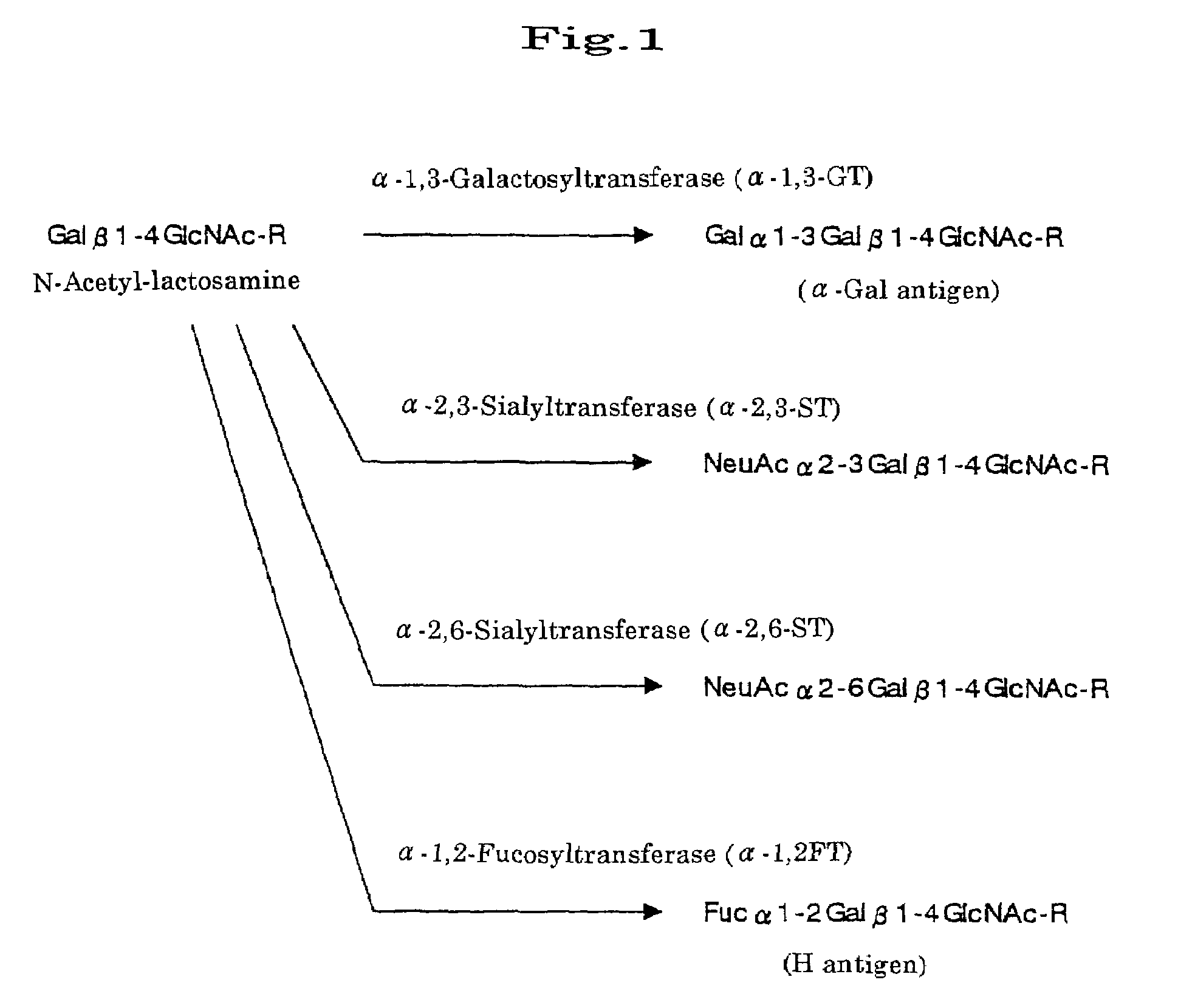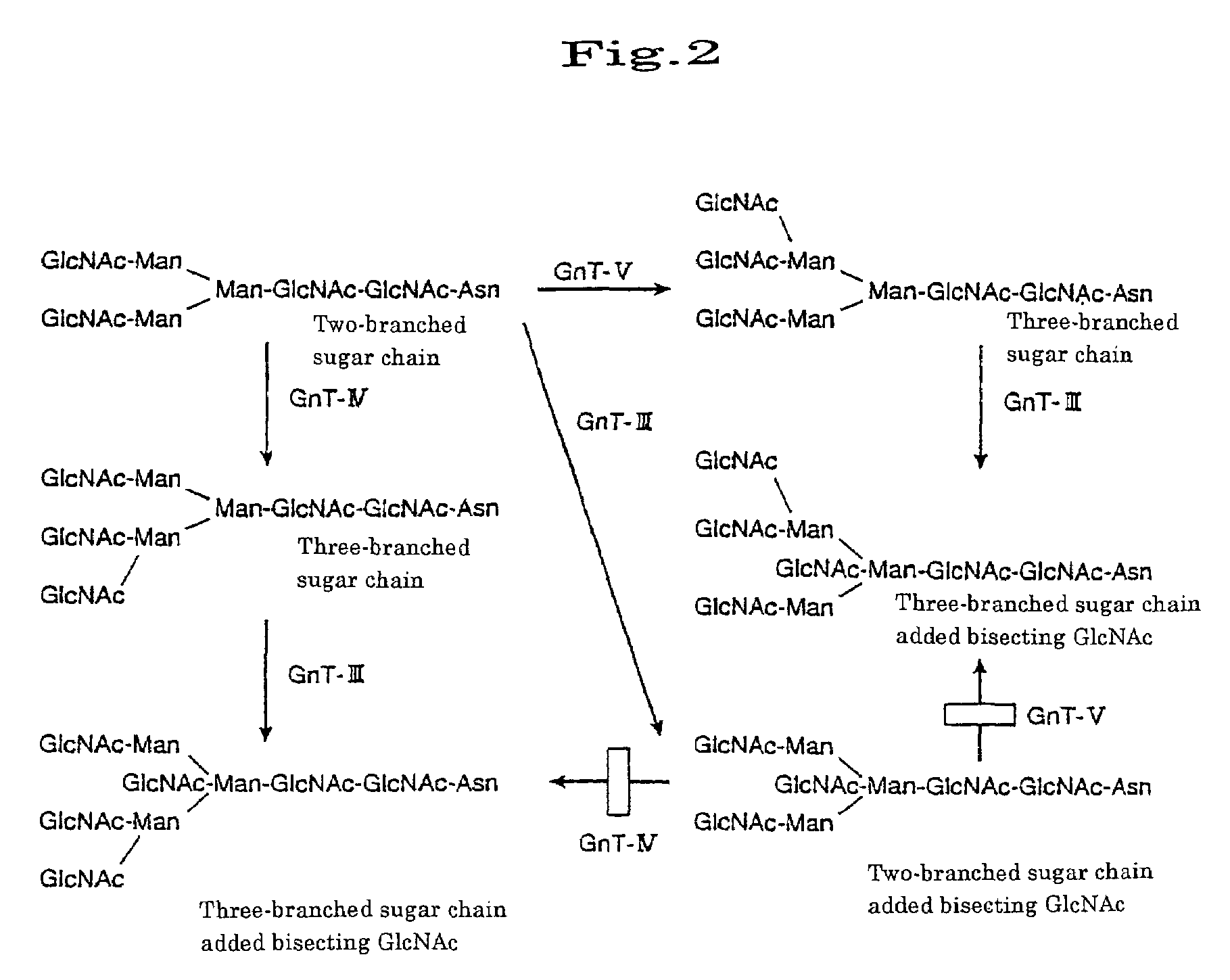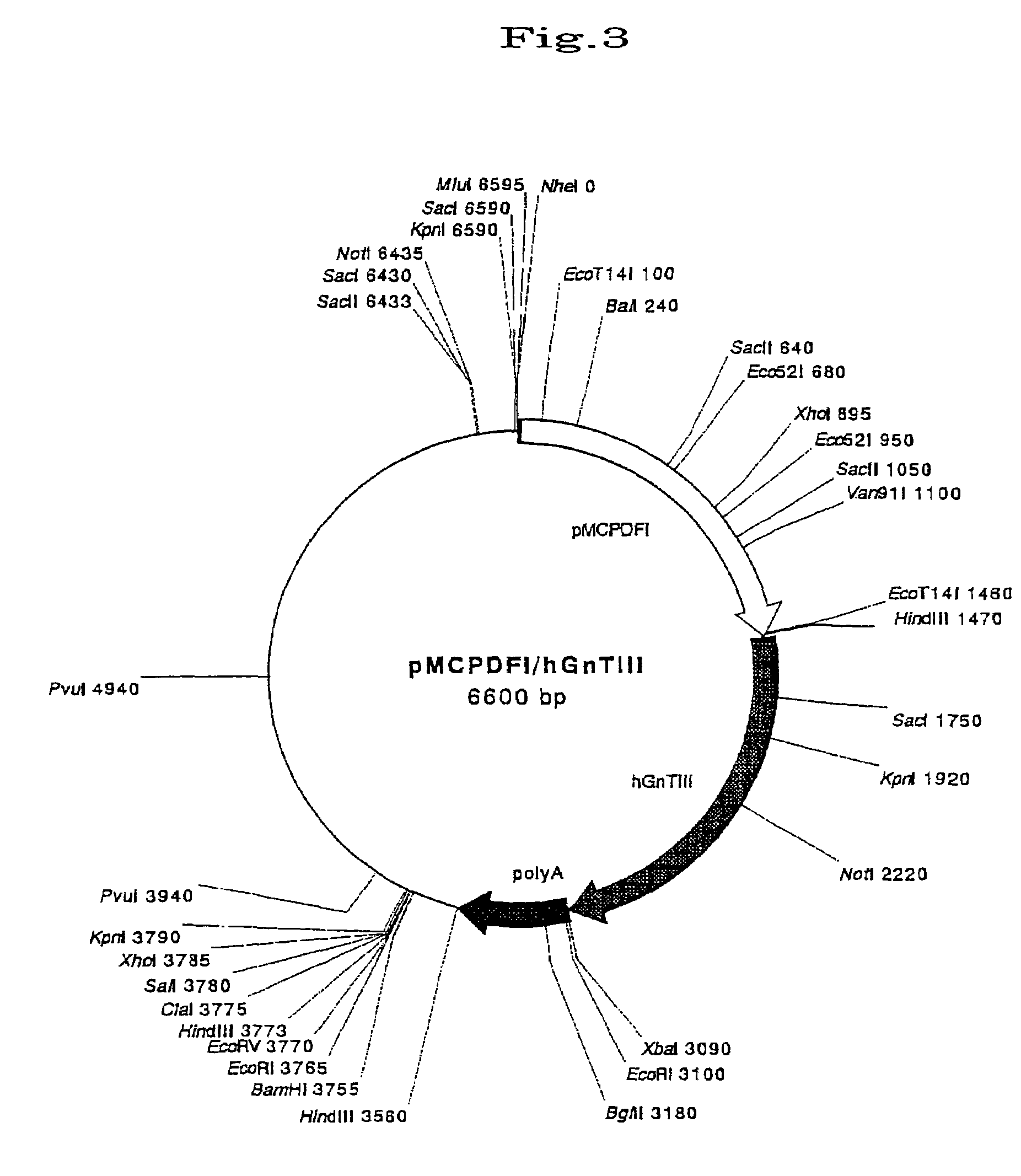Transgenic mammals
a technology of transgenic mammals and pigs, applied in the field of transgenic mammals, can solve the problems of severe adverse effects of -1,3gt gene-ko pigs, inability to use their organs, endothelial swelling, etc., and achieve the effect of reducing -gal antigens and reducing -gal antigens
- Summary
- Abstract
- Description
- Claims
- Application Information
AI Technical Summary
Benefits of technology
Problems solved by technology
Method used
Image
Examples
example 1
Transgenic Pigs Generated with a Transgene Comprising pMCP Promoter, the First Intron of DAF and cDNA of GnT-III
(a) Preparation of the Transgene
[0068]A transgene comprising pMCP promoter, the first intron of DA.F and cDNA of GnT-III was prepared and is shown in FIG. 3. The transgene was prepared in the following way:[0069](1) A 1.7-kb promoter region of pMCP (Japanese Patent Publication KOKAI No. 65887 / 1997) was clipped out at the BstEII and BamHi sites from a porcine genomic phage library, truncated with T4 DNA polymerase, and then inserted into the SmaI site of a pBluescript vector (Stratagene). The vector was clipped out at the BstXI and SpeI sites located at further upstream loci of the promoter and linearized, digested with a Kilo-Sequence deletion kit is (Takara) to obtain a deletion mutant possessing the 0.9-kb promoter gene (the sequence from the 4,498th to the 5,397th bases of SEQ. ID. No. 1 of Japanese Patent Application No. 142961 / 1997), truncated with T4 DNA polymerase a...
example 2
Transgenic Pigs Generated with a Transgene Comprising pMCP Promoter and cDNA of GnT-III
[0079]A transgene comprising the pMCP promoter and cDNA of GnT-III was prepared. As shown in FIG. 4, it was identical to Example 1, except for lacking the first intron of DAF. Transgenic piglings were obtained. Consequently, it was confirmed that liveborn transgenic pigs could be generated from the embryos introduced with GnT-III gene (especially, the human GnT-III gene).
example 3
Transgenic Pigs Generated with a Transgene Comprising Cytomegalovirus Enhancer, Chicken β-actin Promoter and cDNA of GnT-III
[0080]A transgene comprising the cytomegalovirus enhancer, chicken β-actin promoter (pCXN2) and cDNA of GnT-III was prepared. As shown in FIG. 5, it was identical to Example 1 except for replacing the pMCP promoter and the first intron area of DAF by pCXN2. Transgenic piglings were obtained. Thus, it was confirmed that liveborn transgenic pigs could be generated from the embryos introduced with GnT-III gene (especially, the human GnT-III gene).
PUM
| Property | Measurement | Unit |
|---|---|---|
| pH | aaaaa | aaaaa |
| excitation and emission wavelengths | aaaaa | aaaaa |
| excitation and emission wavelengths | aaaaa | aaaaa |
Abstract
Description
Claims
Application Information
 Login to View More
Login to View More - R&D
- Intellectual Property
- Life Sciences
- Materials
- Tech Scout
- Unparalleled Data Quality
- Higher Quality Content
- 60% Fewer Hallucinations
Browse by: Latest US Patents, China's latest patents, Technical Efficacy Thesaurus, Application Domain, Technology Topic, Popular Technical Reports.
© 2025 PatSnap. All rights reserved.Legal|Privacy policy|Modern Slavery Act Transparency Statement|Sitemap|About US| Contact US: help@patsnap.com



